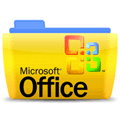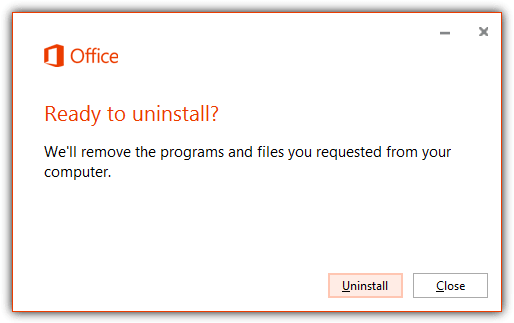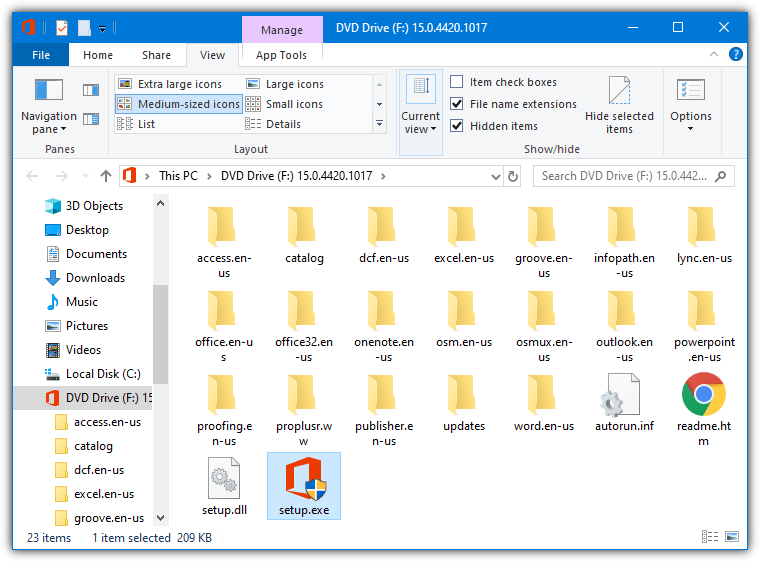11 Ways to Remove or Uninstall Office 2010 for Good

If you’re trying to uninstall Office 2010 from your PC, you might run into some issues. Sometimes, remnants of the program stay behind, causing clutter.
Whether you’re upgrading to a newer version or simply cleaning up, making sure Office 2010 is completely removed is essential.
Here’s a list of 9 ways to ensure Office 2010 is fully uninstalled from your system.

Important Note: Before proceeding with the uninstallation of Microsoft Office, it’s highly recommended to create a backup in case anything goes wrong during the process.
Best methods and tools to uninstall Office 2010
1. Uninstall Microsoft Office via Control Panel or Settings
The first and easiest way to uninstall Microsoft Office is through the official uninstaller. This can be accessed in Programs and Features (Control Panel) or Apps (Windows 10 Settings).
- Open Control Panel (or Settings).
- Go to Programs and Features (or Apps).
- Find Microsoft Office in the list, click on it, and select Uninstall.
- Confirm by clicking Yes or Uninstall to proceed.

If the uninstallation fails through this method, proceed with the next steps.
2. Use IOrbit Uninstaller to Remove Office
If you encounter issues, the IOrbit Uninstaller is an excellent tool for completely removing stubborn programs, including Microsoft Office. It scans for associated files and folders and offers features like batch uninstallation and residual file cleanup.
To download IOrbit Uninstaller, visit: Download IOrbit Uninstaller
3. Uninstall via Setup File
Sometimes running the setup file used for installation can also offer the option to uninstall Microsoft Office. Here’s how to do it:
- Locate the Office installation disk or ISO image.
- Run setup.exe from the drive.
- Select Remove from the options available.
Note: This method doesn’t always work for every Office version. It’s been tested and confirmed for versions up to 2016.

4. Uninstall Office Using Microsoft Office Uninstall Support Tool
Microsoft offers a specialized tool to uninstall Office completely. The Office Uninstall Support Tool works for Office 2007, 2010, 2013, 2016, 2019, and Office 365. Although it didn’t detect our Office 2007 installation, it was effective for newer versions.
- Download the tool from the official page.
- Run the tool after installation.
- Choose the version of Office you wish to remove and follow the on-screen prompts.
Download the Microsoft Uninstall Support Tool
5. Fix Issues with FixIt Tool
Though discontinued in 2018, the FixIt Tool was once an easy way to fix various issues, including Office uninstallation. You can still download and use these files for specific Office versions.
Files for Uninstalling Different Office Versions:
- Office 2003, 2007, 2010, 2013, 2016: O15CTRRemovev2.diagcab
- Office 2013, 2016, Office 365: O15CTRRemove.diagcab
- Office 2010 (Windows 8/10): MicrosoftFixit20055.mini.diagcab
- Office 2007: MicrosoftFixit20052.mini.diagcab
Run the tool:
- Download and run the .diagcab or .MSI file.
- Follow the prompts and restart your computer once the process is complete.
6. Clean Up Microsoft Office Using OffScrub VBScript
For those with technical experience, OffScrub is a utility developed by Microsoft to help remove Office installations. It’s especially useful if you need to uninstall standalone Office products. Use tools like 7-Zip to extract the script.
7. Remove Office with Refuse to Suffer Tools
For Office 2007 and 2010, the Refuse to Suffer tools are helpful when the standard uninstallation methods fail. Run the respective tool and follow the prompts to remove the software.
Download Remove Office 2007 | Download Remove Office 2010
8. Use Revo Uninstaller for a Deep Clean
If all else fails, consider using Revo Uninstaller. It’s an advanced tool that ensures leftover files, registry entries, and system traces are removed after uninstalling Microsoft Office.
To download Revo Uninstaller: Download Revo Uninstaller
9. Uninstall Microsoft Office via Command Prompt
Using the Command Prompt is another method to uninstall Microsoft Office. Here’s how to do it:
- Open Command Prompt as Administrator (search for “cmd” in the Start menu, right-click, and select Run as Administrator).
- Type the following command and press Enter:bashCopyEdit
cd %ProgramFiles%\Microsoft Office\OfficeXXReplaceXXwith the Office version number (e.g., Office16 for Office 2016). - Then, type the following command:arduinoCopyEdit
setup.exe /uninstall - Follow the prompts to finish the uninstallation.
10. Uninstall Microsoft Office via PowerShell
To uninstall Office using PowerShell, follow these steps:
- Open PowerShell as Administrator (search for PowerShell, right-click, and select Run as Administrator).
- Type the following command:mathematicaCopyEdit
Get-WmiObject -Query "SELECT * FROM Win32_Product WHERE Name LIKE 'Microsoft Office%'" | ForEach-Object { $_.Uninstall() } - Press Enter. The process will uninstall Microsoft Office, though it may take some time.
11. Registry Clean-Up and Leftover Files Deletion
After uninstalling Office, residual files and registry entries can still remain on your system. To ensure a complete removal, manually clean up these leftovers:
- Open Registry Editor by typing regedit in the search bar and pressing Enter.
- Navigate to:
HKEY_LOCAL_MACHINE\SOFTWARE\Microsoft\Office - Delete any remaining Office folders or keys that are associated with the version you removed.
Additionally, use a file cleaner tool like CCleaner to scan for leftover files:
- Download and install CCleaner from here.
- Run the tool and select Cleaner.
- Click on Run Cleaner to remove any leftover files.
Conclusion
Uninstalling Office 2010 doesn’t have to be difficult. Whether you use the Office 2010 uninstall tool or manual methods, these steps ensure Office 2010 is completely removed from your system. Be sure to check for any leftover files or registry entries to ensure a thorough cleanup.
For further assistance, check out resources like uninstalling Microsoft .NET Framework, or learn how to uninstall programs in Safe Mode. If you’re dealing with other software issues, explore tools for diagnosing and repairing Office 2007 problems or discover uninstallers for antivirus software.
With these methods, you can confidently uninstall Office 2010 and ensure a clean system.





User forum
31 messages